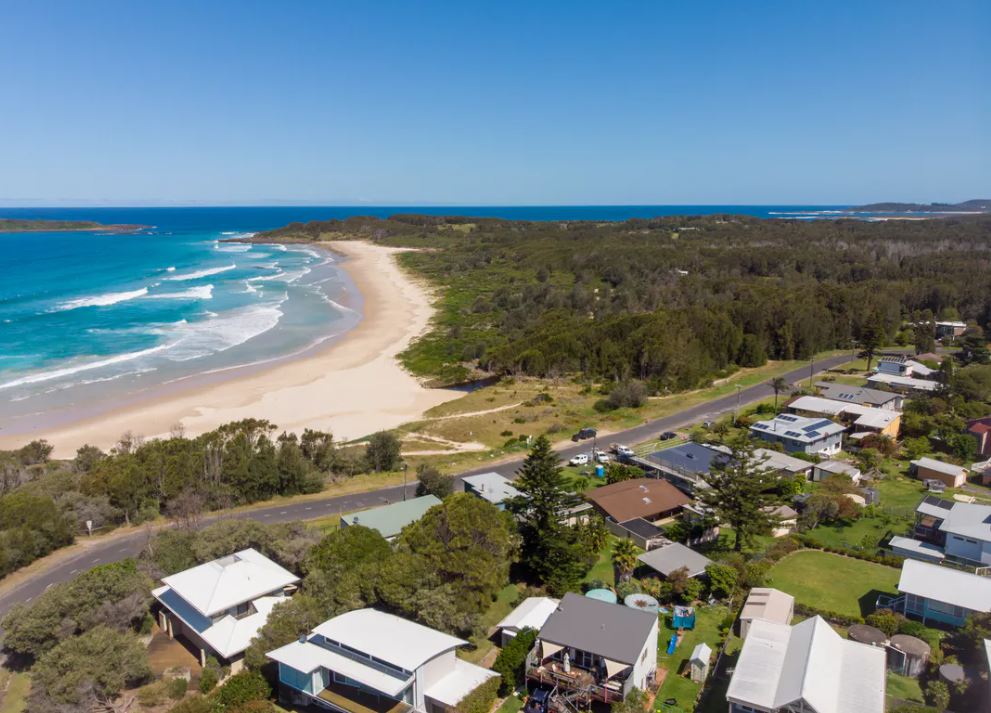Endeavour Energy has announced that a solar-powered community microgrid featuring 3 MW / 3 MWh of battery energy storage is now operational on the New South Wales (NSW) South Coast, marking a significant step towards energy independence for the towns of Bawley Point and Kioloa during periods of extreme weather or busy holiday periods.
The $8 million (USD 5.39 million) microgrid, jointly funded by Endeavour and the state and federal government-backed Bushfire Local Economic Recovery (BLER) Fund, will act as a self-contained energy system, harnessing electricity from about 2 MW of residential solar and 430 kW/1.2 MWh of subsidised residential batteries installed in about 100 homes in the two communities, along with the 3 MW grid-connected battery. This configuration empowers the microgrid to operate autonomously during outages, forming an island of power for the community.
The microgrid replaces an existing 1 MW diesel-fuelled generator and connects to the main electricity grid, and is strategically sited to provide a reliable and secure power supply for the two towns that are frequently required to deal with power outages.
“These two towns, like many other rural and regional communities across Australia are vulnerable to catastrophic weather events,” Endeavour Chief Executive Officer Guy Chalkley said. “The grid independence provided by this community microgrid becomes essential for safeguarding our regional communities.”
Chalkley emphasised the microgrid’s role in empowering the coastal towns during bushfires, storms, and peak periods.
“The community microgrid will mean that shops such as the local supermarket can stay open and life can continue rather than coming to a halt every time there is an outage,” he said.
“This is a first for NSW, and once proven successful, will become a benchmark for similar towns across the state.”
Local leaders, including NSW Member for the South Coast and Bawley Point resident Liza Butler, have hailed the project’s impact.
Butler, who experienced the bushfires that ravaged the region in 2019/2020 said that “when the power goes out, we can’t carry out the basics such as boil water, flush the toilet, and in times of emergency, we also lose telecommunications and our water source.”
Endeavour, which has a network spanning 25,000 square kilometres and incorporating 250,000 residential solar connections, said the Bawley Point and Kiola initiative is not just a standalone project, but rather a blueprint for the future.
Endeavour said it is already exploring other locations that can benefit from similar installations, underscoring the potential for this model to be replicated across Australia.
This content is protected by copyright and may not be reused. If you want to cooperate with us and would like to reuse some of our content, please contact: editors@pv-magazine.com.









By submitting this form you agree to pv magazine using your data for the purposes of publishing your comment.
Your personal data will only be disclosed or otherwise transmitted to third parties for the purposes of spam filtering or if this is necessary for technical maintenance of the website. Any other transfer to third parties will not take place unless this is justified on the basis of applicable data protection regulations or if pv magazine is legally obliged to do so.
You may revoke this consent at any time with effect for the future, in which case your personal data will be deleted immediately. Otherwise, your data will be deleted if pv magazine has processed your request or the purpose of data storage is fulfilled.
Further information on data privacy can be found in our Data Protection Policy.